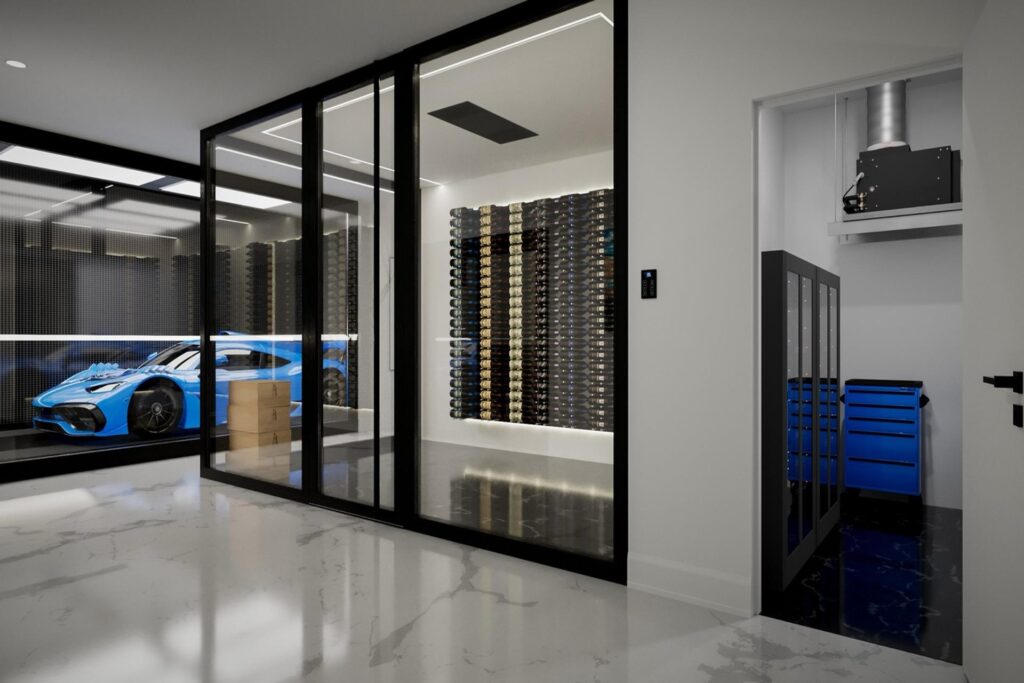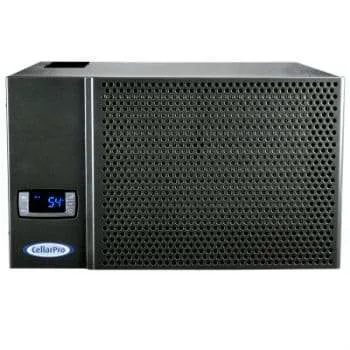So, you’re designing your dream wine cellar. You’ve chosen the perfect racking and the ideal location. But the single most important decision you’ll make is how to cool it. A proper wine cooling system isn’t just an appliance; it’s the heart of your cellar, silently working to protect your investment and ensure every bottle ages to perfection. If you’re wondering, “Can you recommend some modern wine cellar cooling systems?”—the answer is a resounding yes. Let’s uncork the options.
Why a Specialized Cooling Unit is Non-Negotiable
You might be tempted to use a standard air conditioner, but this is a critical mistake. Wine cellar cooling units are specifically engineered to do two things a regular AC unit cannot:
Precise, Low-Temperature Control: They reliably maintain the ideal 55°F (13°C) temperature.
Manage Humidity: They cool without dehumidifying the space, preserving the 50-70% humidity essential for keeping corks from drying out.
This is the most common and versatile choice for most residential cellars, especially those under 500 square feet.
How It Works: This is an all-in-one unit, much like a hotel mini-fridge, that vents directly through an exterior wall or into an adjacent room.
Best For: Converting closets, under-stair spaces, or small rooms where a dedicated duct run isn’t feasible.
Modern Advantages:
Ease of Installation: Generally the simplest and most cost-effective to install.
Space-Saving: Compact design doesn’t eat into your cellar space.
Quiet Operation: Newer models are remarkably quiet, with sound-dampening technology.
Considerations: Requires a vented grille for the intake of warmer room air.
For larger cellars, rooms without an exterior wall, or when silence is paramount, a ducted split system is the gold standard.
How It Works: This system has two components. The evaporator unit is mounted inside the cellar (often in a ceiling plenum or closet), while the condenser and compressor are located outside the room (like in an attic, garage, or basement).
Best For: Large collections, cellars in the interior of a home, and wine rooms where aesthetics and ultra-quiet operation are top priorities.
Modern Advantages:
Whisper-Quiet: The noisiest components are located remotely.
Design Flexibility: The interior unit is discreet and can be hidden from view.
Powerful & Efficient: Ideal for cooling larger or unusually shaped spaces effectively.
Considerations: Higher installation cost and complexity, requiring a professional HVAC technician.
A popular hybrid option that offers the power of a split system with a slightly different approach.
How It Works: Similar to a standard mini-split, it has an indoor evaporator unit and an outdoor condenser. However, the indoor unit is mounted high on a wall inside the cellar and requires a small hole for the refrigerant lines, but no complex ductwork.
Best For: Cellars where a through-the-wall vent isn’t possible but a full ducted system is overkill.
Modern Advantages:
Excellent Efficiency: Very effective at maintaining stable temperatures.
Sleek Profile: Indoor units have a modern, low-profile look.
Easier Installation than Ducted: No need to build a plenum or run ducts.
Considerations: The indoor unit is visible within the cellar, which may not suit all aesthetic preferences.
Key Features to Look For in a Modern Unit
Technology has come a long way. When comparing systems, prioritize these features:
Precise Digital Controls: Look for a system with an easy-to-read digital thermostat and humidity monitor.
Adaptive Defrost: Automatically adjusts the defrost cycle based on the actual conditions in the room, preventing unwanted temperature swings.
Low-Vibration Compressors: Vibration is an enemy of wine; modern compressors are designed to minimize it.
Wi-Fi Connectivity: The ultimate modern convenience. Monitor and adjust your cellar’s climate from your smartphone, and receive alerts if a problem arises.
Our Top Recommendation: Start with a Professional Consultation
While we can recommend types, the best system for you depends on your specific space, insulation, and budget. The most crucial step is to consult with a wine cellar cooling specialist. They can perform a heat-load calculation to determine the exact capacity you need and recommend the perfect model to protect your collection for years to come.
Investing in the right cooling system is the true secret to a world-class wine cellar. It’s the silent guardian that ensures your prized bottles are always served at their very best.






